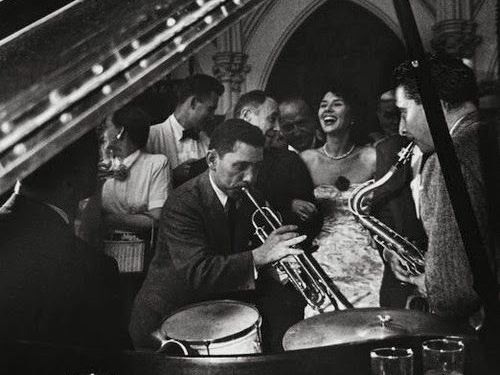The Rhythm of a Nation: Jazz's Enduring Impact on American Culture
ARTS


New Lyons, November 22, 2024 — Outside The Velvet Mirage, the sultry sound of a saxophone drifts into the night, a reminder that jazz is more than just music in America—it’s the pulse of the nation itself. From New Orleans’ smoky clubs to New Lyons’ bustling streets, jazz has woven itself into the fabric of American life, shaping—and being shaped by—our culture, identity, and shared experiences.
Jazz emerged in the early 20th century, born from a fusion of African rhythms, blues, and ragtime. It was a voice for people looking to express themselves, to find freedom and connection in a world that was moving faster than ever before. Louis Armstrong, one of the giants of jazz, once said, “What we play is life.” His words ring true, as jazz continues to mirror both the struggles and the triumphs of American society.
New Lyons has been a hotbed for jazz innovation for years. The city’s Annual Jazz Festival, now six years running, draws musicians and fans from all corners of the globe. Festival Director Marcus “Doc” Harper says, “Jazz is the soul of this city. You can feel it in the streets, in our hearts—it’s a language everyone here understands.” Local legends like Elena Vicari, with her voice that seems to reach right into your soul, and the high-energy New Orleans Brass Band keep the jazz scene alive and vibrant. They bring new styles and fresh ideas to the stage, keeping the genre as thrilling as ever.
Jazz has spilled over from music into art, literature, and even fashion. Its improvisational style matches the spontaneity of Impressionist paintings by artists like Verron Plymouth, whose brushstrokes capture life in fleeting moments. In literature, jazz rhythms have inspired poets and writers, from Langston Hughes to Jack Kerouac, who embodied the same spirit of exploration and rebellion in their work.
Jazz has long been a unifying force, breaking down racial and social barriers. Integrated bands and audiences were a common sight in jazz clubs, pushing back against the segregation norms of the time. Evelyn Parker, a well-known jazz vocalist, remembers, “In those clubs, it didn’t matter who you were. The music brought us together. It was a place where people could feel free.”
Throughout history, jazz has been intertwined with social change. Its themes of resilience and hope offered comfort during the Great Depression and became an anthem during the Civil Rights Movement. Dr. Alan Richards, a cultural historian, explains, “Jazz gave voice to those who had none. It was a way to challenge injustice, to protest, but through creativity and beauty.”
The genre is still evolving, mixing with rock, hip-hop, and classical music to create something new. At The Velvet Mirage, a new generation of artists takes the stage each night. A Japanese jazz trio called Sakura Fusion blends Eastern melodies with traditional jazz, showing just how far the genre has spread and how adaptable it remains.
Efforts to preserve jazz’s legacy are visible in educational programs and music institutions. The New Lyons Conservatory of Music offers scholarships and workshops, fostering the next generation of jazz musicians. Mayor Samuel Turing emphasizes the role of arts in education: “Jazz is part of our heritage. By investing in arts education, we’re preserving our past and inspiring future innovation.”
Jazz isn’t just a genre—it’s a reflection of America’s journey, a mirror to our complex, diverse, and ever-changing society. It speaks to something universal, connecting people across backgrounds and generations. As the last notes of the night fade at The Blue Note Club, it’s clear that jazz, with its storied past and vibrant present, will continue to shape and be shaped by this nation. In the words of Duke Ellington, “Jazz is freedom. It’s about living in the moment.” And here in America, that moment shows no sign of ending.
Marcus Thompson is a cultural correspondent for the NL Sentinel, delving into the heart of music and its impact on society. His passion for jazz brings readers closer to the rhythms that move a nation.
